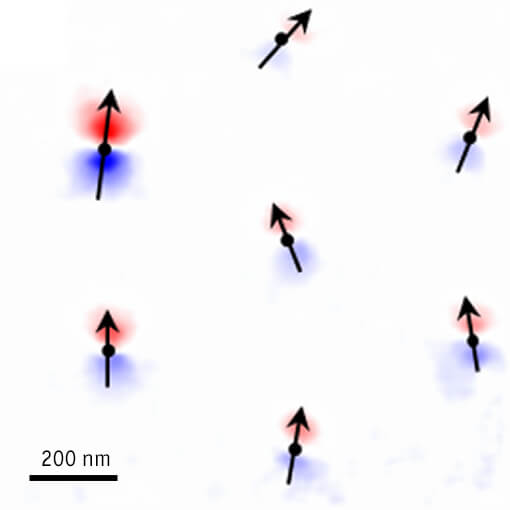
Dynamic Visualization of Nanoscale Vortex Motion using attoSTM in an attoLiquid3000
Matias Timmermans and co-workers invented an innovative technique removing the lack of temporal resolution in STM imaging. They used an attoSTM in an attoLIQUID3000 3He cryostat to measure and study vortex motion in 2H-NbSe2 on a much shorter time scale. By applying a small AC magnetic field they induced a periodic movement of the vortices. The external perturbation results in a distinct smearing of the vortex in the images. Instead of collecting several consecutive images, the tunnelling current is recorded at each point over three cycles of the excitation. The exceptional thermal and spatial stability of the attoSTM in the attoLiquid3000 allows further analysis of the time dependence of this signal at each point. Using an additional lock-in technique more details and understanding of the vortex motion is revealed. By mapping the first and a second harmonic of the tunnelling signal (see upper figures), they were able to visualize changes of the vortex lattice when the vortex density is increased by increasing the DC magnetic field.
In a next step, they used the AC excitation as a time reference to track the motion of individual vortices in time. This results in time resolved snapshots of the vortex motion, which allows them to construct a movie frame by frame. This visualization procedure is unprecedented and promises a much better understanding of the dynamical behaviour of the superconducting condensate (see lower figures). Contrary to the expectation the vortex does not move in a line but follows a circular motion, due to a potential created by atoms and/or vortices.
This measurement was realized with the attoAFM III.
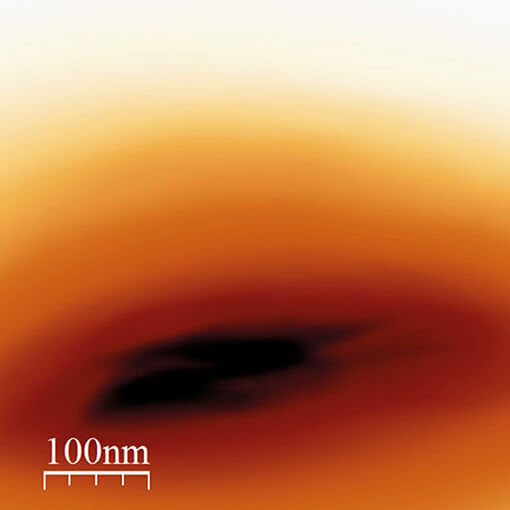
Imaging fractional incompressible stripes in integer quantum Hall effect
Nicola Paradiso, Stefan Heun, and co-workers measured the fractional quantum Hall effect in quantum point contacts using an attoAFM III in an attoLIQUID3000 at very low temperature (300 mK) and high magnetic field (≈8 T). They demonstrated that fractional features were unambiguously observed in every integer quantum Hall constriction. These ground-breaking Scanning Gate Microscopy experiments pave the way to a better understanding of the role of fractional phases in the field of coherent quantum transport!
This measurement was realized with the attoAFM III.
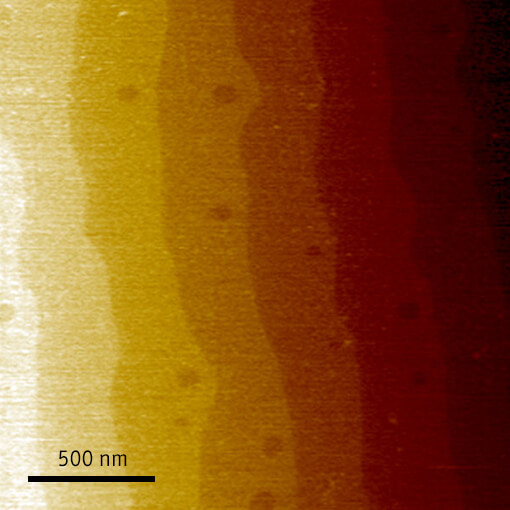
In-situ AFM measurements of SrTiO3 and Co particles inside an electron microscope
attocube systems offers a comprehensive line of products which are compatible with ultra high vacuum and cryogenic conditions. In this context, we have extended our product family by developing an Atomic Force Microscope (AFM) series designed for in-situ use inside Scanning Electron Microscopes (SEM) or environmental SEM. This series of ultra-compact AFMs allows scientists to perform high-resolution topographic, magnetic, or tensile strength measurements in material science, structural biology, solid state physics, and other fields of nanotechnology. Depending on the specific application, two different AFM versions are available: a cantilever based AFM with interferometric deflection detection and a tuning fork AFM.
This measurement was realized with the attoAFM III.
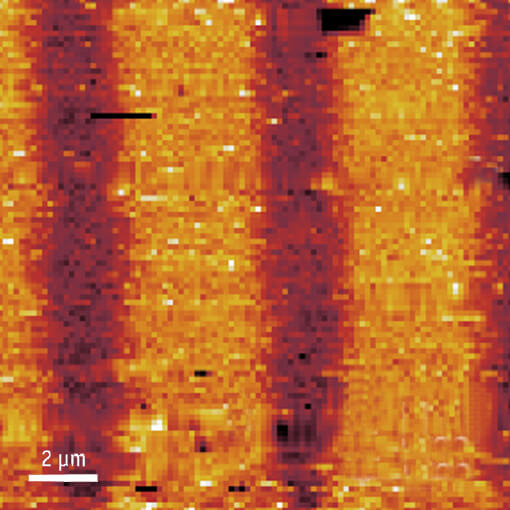
attoAFM III in Toploading Insert
The depicted data was taken with a tuning fork attoAFM III specifically designed for mK operation. The extremely sensitive microscope was mounted on a toploading insert (see images and project description on the left page), which ensures a much higher usability in terms of turnaround times upon tip and sample exchange than if it were mounted directly on the mixing chamber. The sample temperature in the toploading DR was 55 mK during the scan at 100 nm/s. The images nicely demonstrates that the delicate microscope works reasonably well even under these extreme conditions.
This measurement was realized with the attoAFM III, and the Tuning-fork-based AFM for Scanning Gate Microscopy.
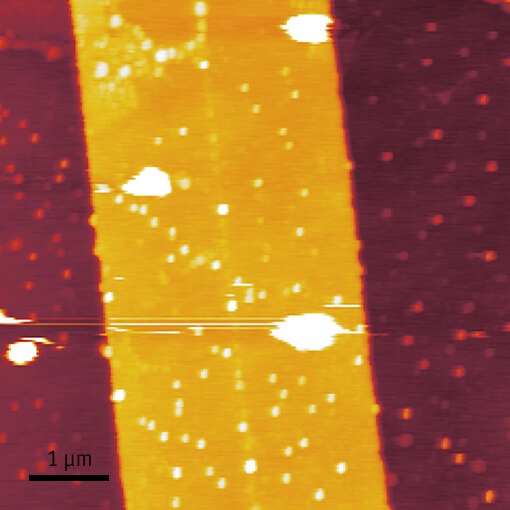
attoAFM III Mounted on Mixing Chamber
This AFM-topography test-measurement of an 20 nm high calibration grating was performed in a pulse-tube based dilution fridge from Leiden Cryogenics. Even though the sample was scanned with 3 µm/s, the temperature did not rise above 80 mK, while the base temperature of the (here not optimized) braid cooled sample was at around 62 mK. Geophone measurements verified the low vibrations of the platform and showed that it is a suitable approach for high resolution, ultra-low temperature AFM-type experiments.
(attocube applications in collaboration with Leiden Cryogenics, 2011)
This measurement was realized with the attoAFM III, and the Tuning-fork-based AFM for Scanning Gate Microscopy.
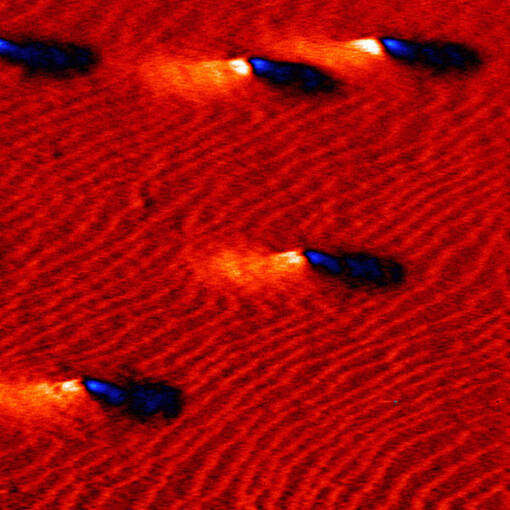
Tuning Fork based AFM measurements at cryogenic temperatures
The attoAFM III is a tuning fork based setup for highly precise low temperature measurements. The non-optical design faciliates e.g. measurements on light-sensitive samples using conductive STM-type tips.
The distance feedback is done by detecting the tuning fork vibration using a Phase-Locked Loop (PLL) together with a feedback loop. The PLL tracks the resonance of the tuning fork, whereas the feedback loop keeps the z-distance in such way that the frequency shift (vs. the free oscillation) remains at a certain level.
The presented data was measured using uncapped, stacked InAs Quantum Dots in a GaAs matrix with an attoAFM III inside an attoLIQUID.
This measurement was realized with the attoAFM III.

